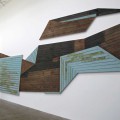Objecthood doesn’t have a place in the world if there’s not an individual person making use of that object… I of course don’t think my work is about my work. I think my work is about you. (Olafur Eliasson, 2007) Artist Olafur Eliasson is by no means the first person to emphasize the importance of one’s own senses as they engage with an artwork or outside stimulus. Psychologists, philosophers, neuroscientists, Marcel Duchamp, and yes, even museum professionals have spent a great deal of time thinking about what happens when visitors encounter an object or environment that activates their senses. Stephen Weil’s breakthrough formulation came in the late 1990s, when he advocated that museums retool their objectives from “being about something to being for somebody” (Weil 1999). In that light, Eliasson’s approach might be viewed as an extreme case of art’s project in general: “The work itself I often refer to as a machine, or a phenomenon-maker, but without an individual person it doesn’t really do much” (Eliasson, 2007). The same can be said of the Mona Lisa. A corollary to this emphasis on the individual’s subjective response is a rejection of any flattening of museum messages to a single authority voice. How can we pretend to stand in for the variety of inflections, the prismatic range of perceptions our visitors may have, each with a personal, specific background, aptitudes, and entrance narrative? Of course, most interpretive discourse is not written with the intention of flattening or reducing an artwork’s meaning – on the contrary, the hope is to open the visitor up to a deeper art experience. But inevitably, one field – typically art history – is privileged, and other perspectives are demoted by their conspicuous omission. The net effect can be a disempowering of the visitors’ own real-time gaze and embodied sensations. All of these issues were put to the test in the exhibition Take your time: Olafur Eliasson, presented at SFMOMA from September 8, 2007 through February 24, 2008, in conjunction with another smaller but no less spectacular Eliasson show titled Your tempo. Your tempo, presented in the Museum’s second floor Architecture and Design galleries, closed on January 13, 2008. It focused on Eliasson’s BMW H2R art car commission, an “ice car” dubbed ‘Your mobile expectations’ that was enclosed in a walk-in freezer. In fact, both exhibitions consisted not of paintings or sculptures per se, but rather a series of immersive, perception-enhancing environments (Fig’s 1 – 3). Some used altered light sources (mono-frequency sodium vapor lamps in Room for one colour; a computer-controlled timed immersion in the spectrum in 360º Room for all colours); others employed lenses, mirrors or dichroic glass to deconstruct our normal visual field and return it to us in altered forms (Yellow vs. purple, Sunset kaleidoscope, One-way colour tunnel, etc.); and in still others, water in a descending spray or reflected pool created stunning tactile and visual effects designed to be experienced as an individual and in a group (Beauty and Notion motion).







































